



The Pulo of Altamura is the largest karst sinkhole in the Alta Murgia. It opens, at about 477 m a.s.l., in the Murgian plateau about 6 kilometers north of the city of Altamura.
The perimeter, measured on the edge of the sinkhole, has a linear development of about 1800 m. The longest diameter is just over 500 meters, while the other diameters are never less than 450 meters. The difference in altitude varies between 70 and 75 meters.
The origin of the Pulo of Altamura, as well as that of other karst forms of the territory (such as, for example, the Pulicchio of Gravina, the Pulo of Molfetta, Gurio Lamanna, the Grave Tre Paduli) is explained by several authors with the physical-chemicals mechanisms typical of karst, that is the double action, mechanical and chemical, that rain water exerts on the rocky mass of the limestones of the Murgia and the Gargano.
Limestone itself is a waterproof rock, but if severely fractured (as in the case of the Murgia), it becomes highly permeable to rain water, allowing it to infiltrate, physically erode the rock and also react chemically with it .
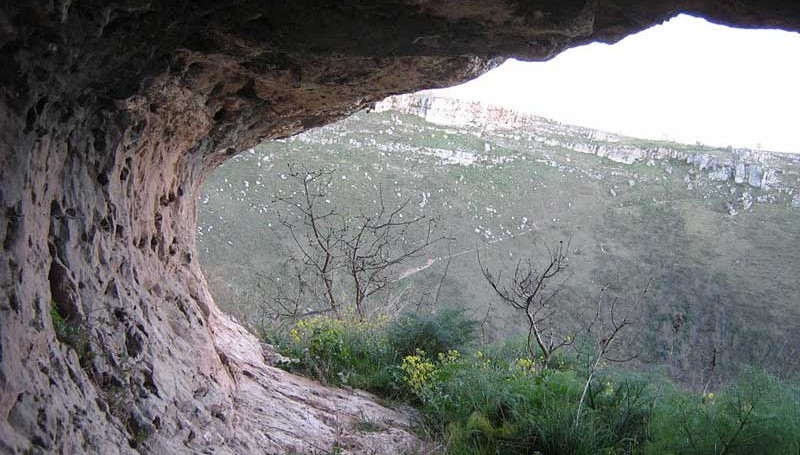
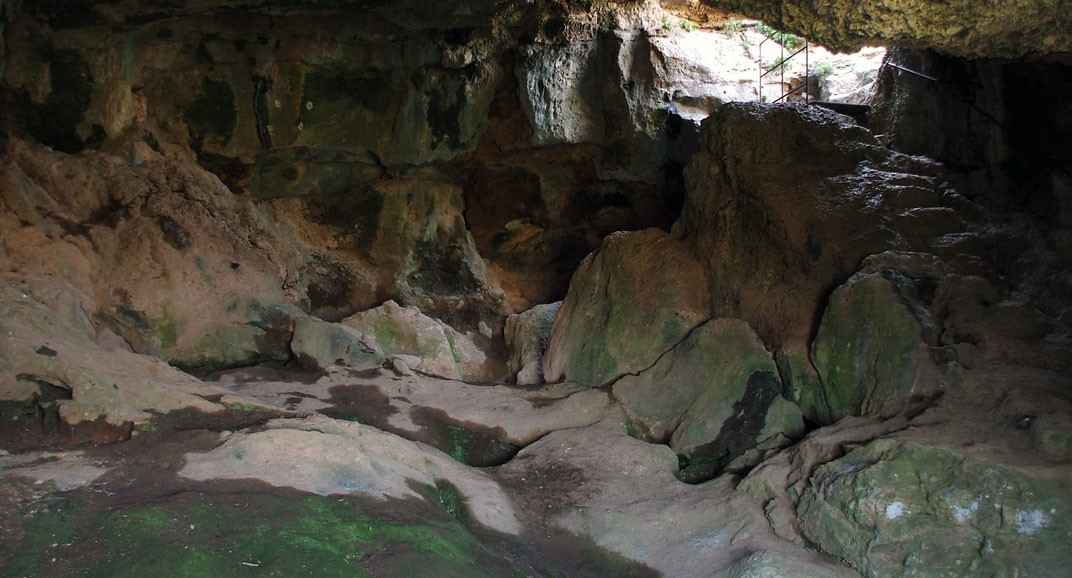

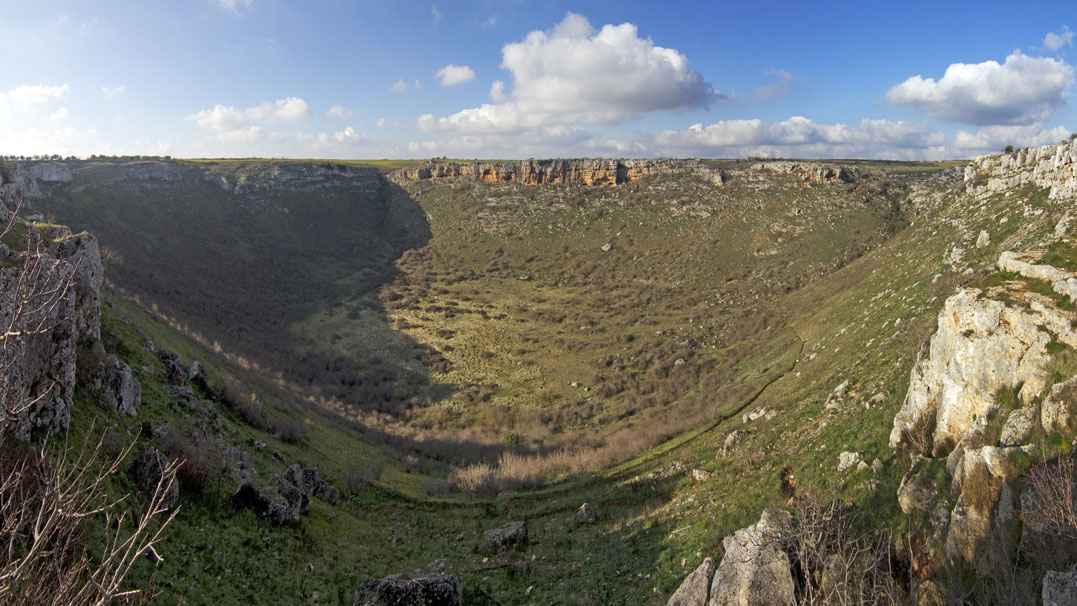
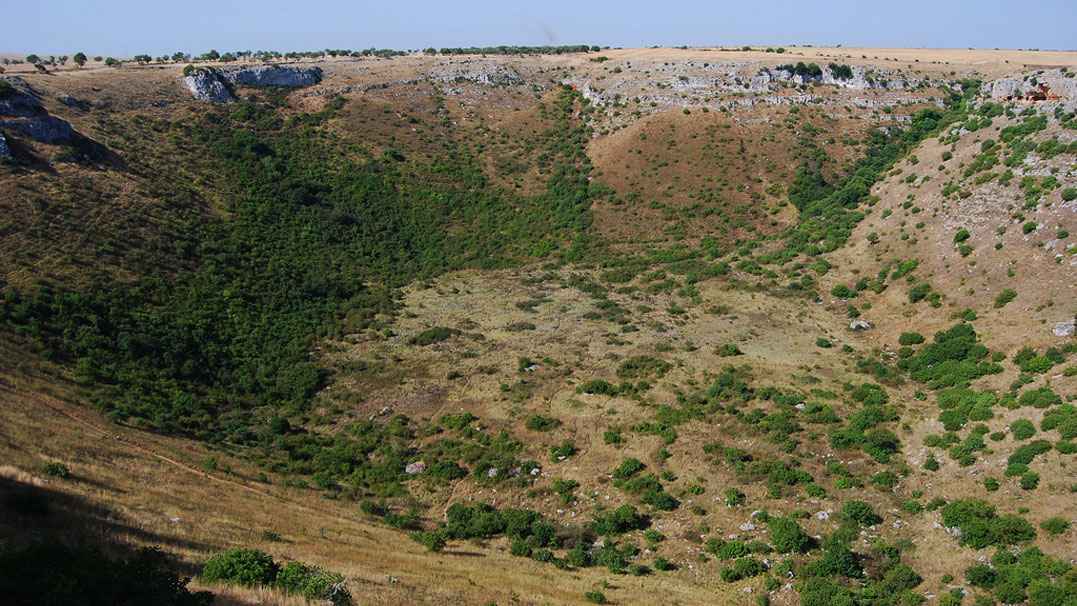
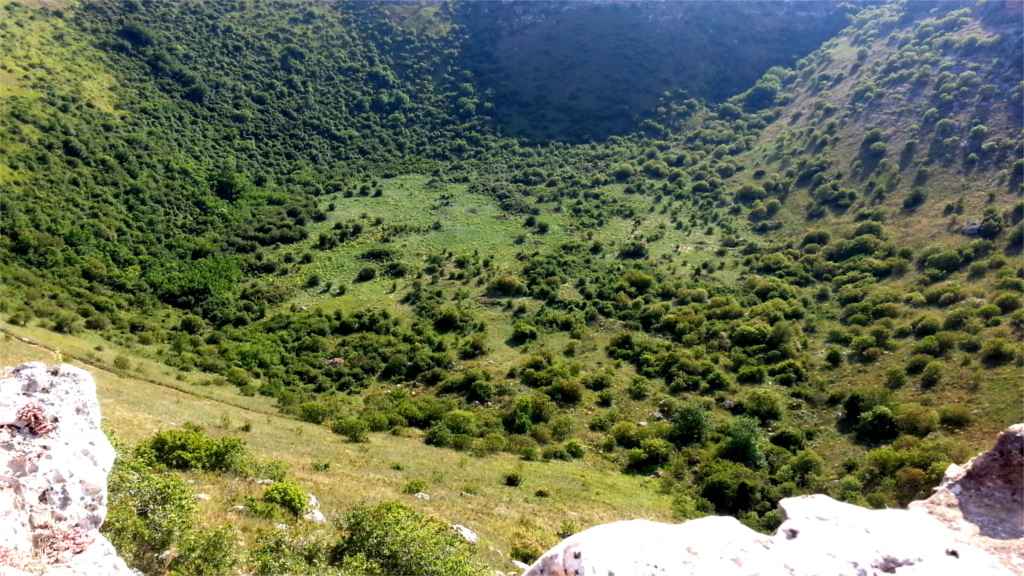
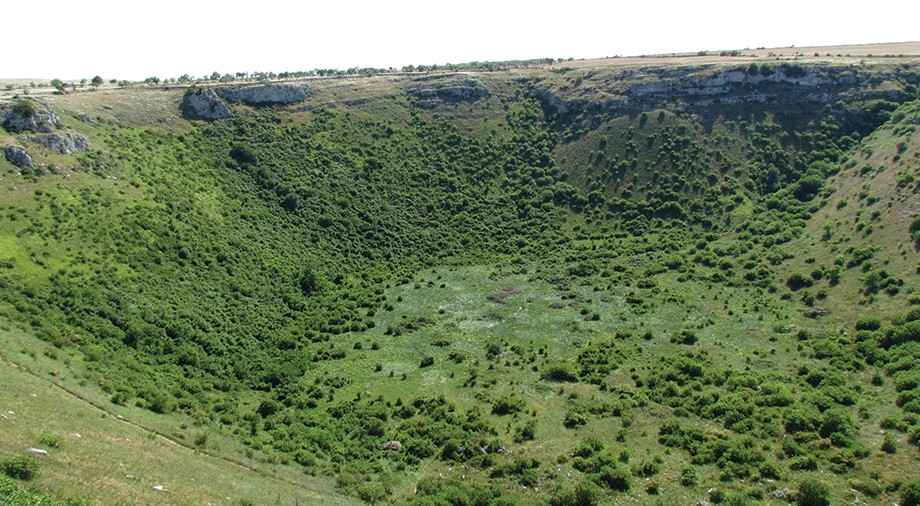
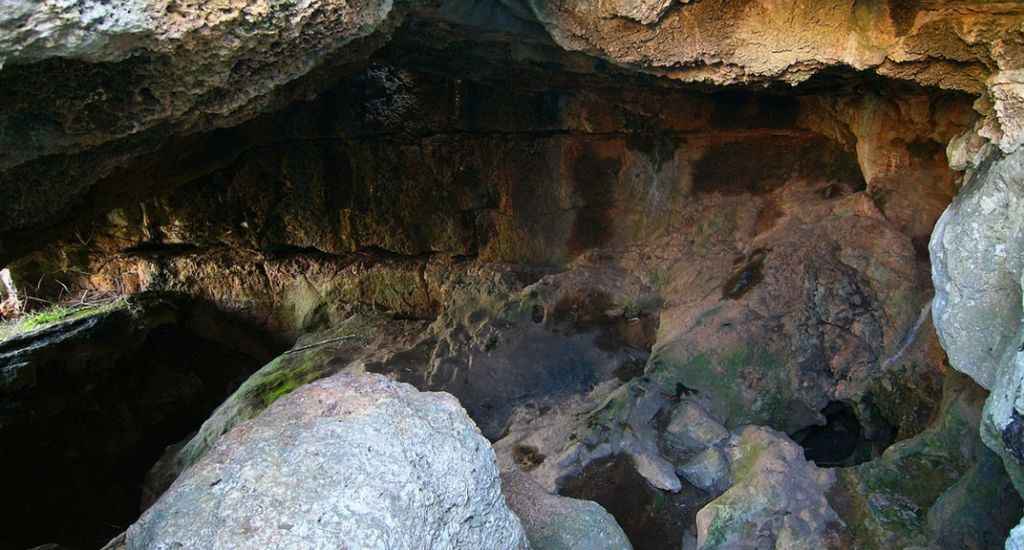
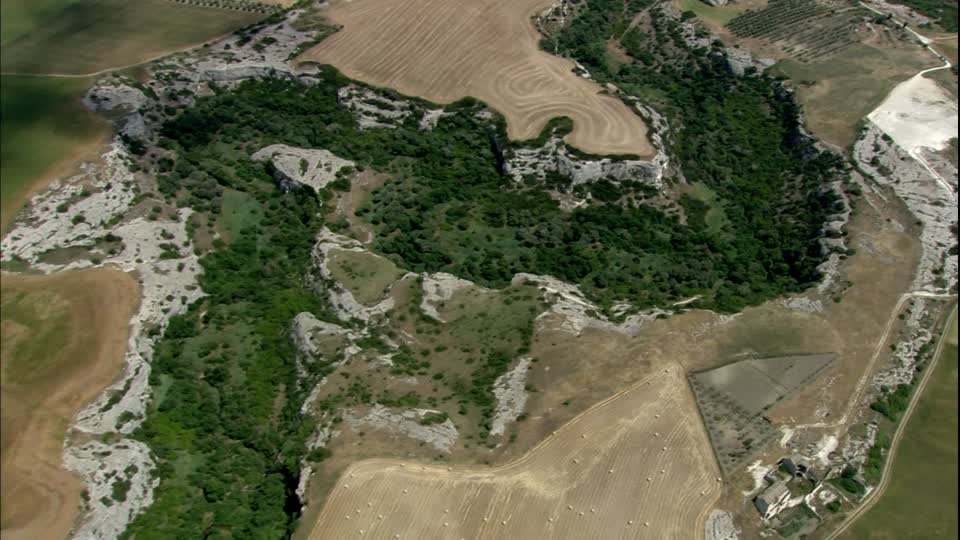
This is the reason why the Murgia area is very permeable almost everywhere; there we note the absence of superficial water courses, replaced by the lames, very common in the Murgia, and the known dryness of the region. The lames are grooves due to the erosion of rainwater and are often confused with normal waterways. In the lames, only a small part of the water flows on the surface, while for the remaining part it infiltrates and flows underground following almost the same direction it would have on the ground.
In light of the foregoing, the pulo of Altamura is the lowest point of a vast area of drainage of rainwater (water catchment basin), which arrives through the two lames, one in the north-north-east and one in the north-west
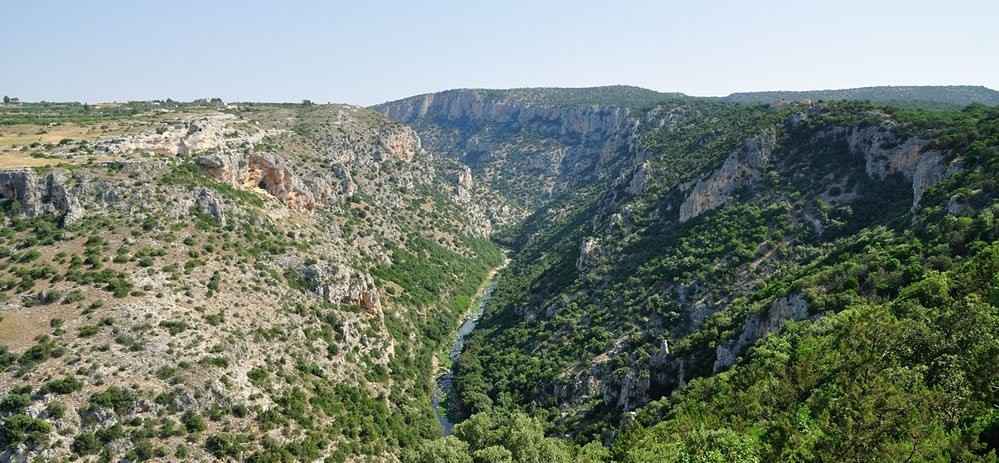
The water catchment area of the Pulo of Altamura is of such size that it has been defined by Colamonico as "one of the largest absorption areas found in all of Puglia". The part of the water with delivery at the lowest point generated, during the course of the geological eras, the Pulo of Altamura, thanks to the two mechanisms of mechanical and chemical erosion, the first acting mainly on the outside and the second more on the inside (underground).
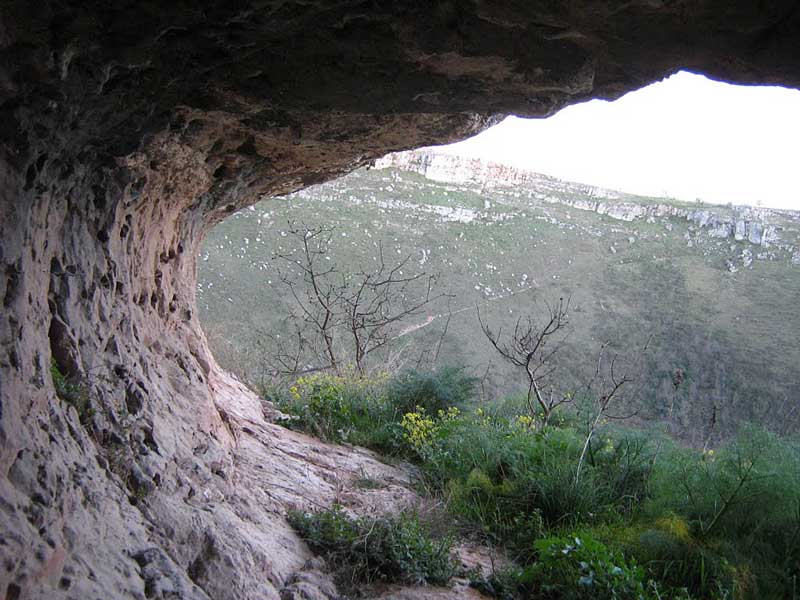
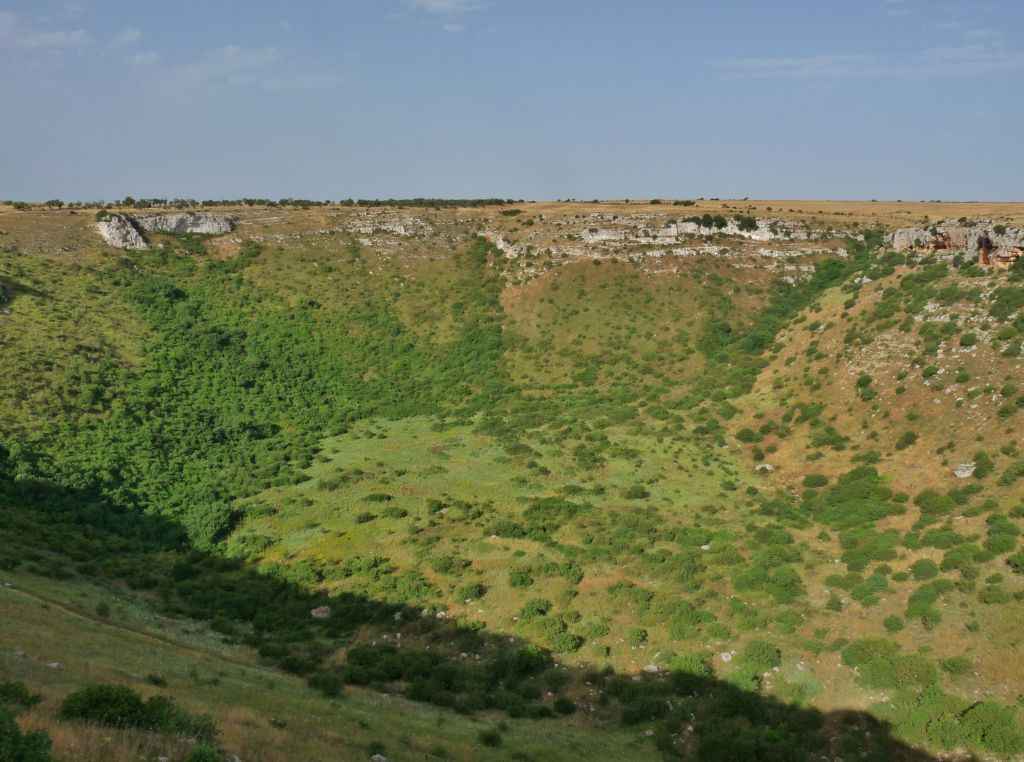

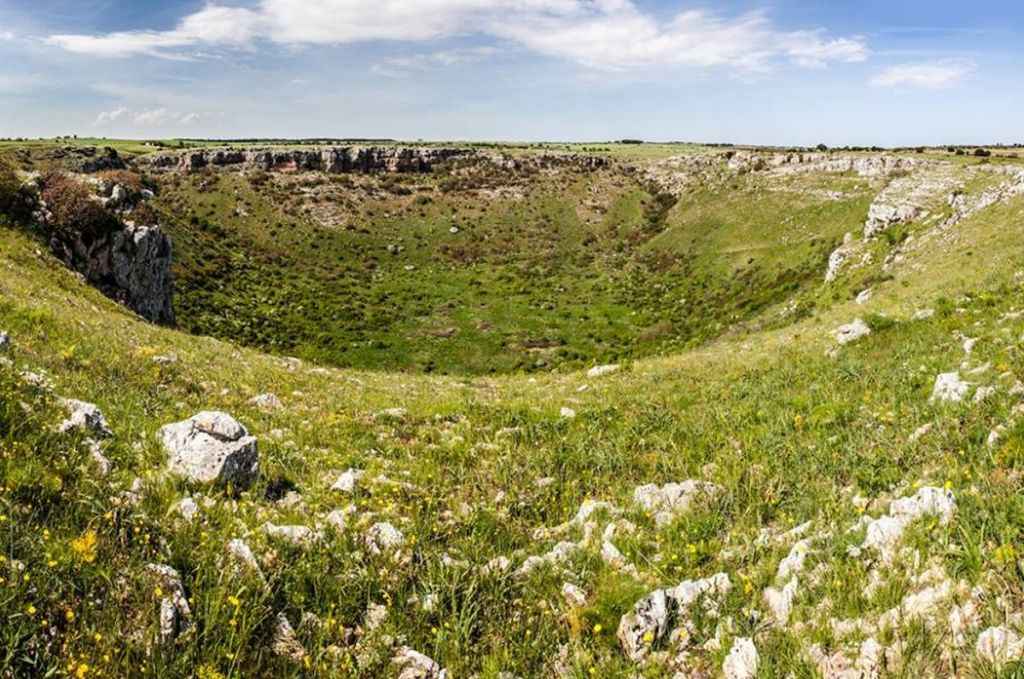
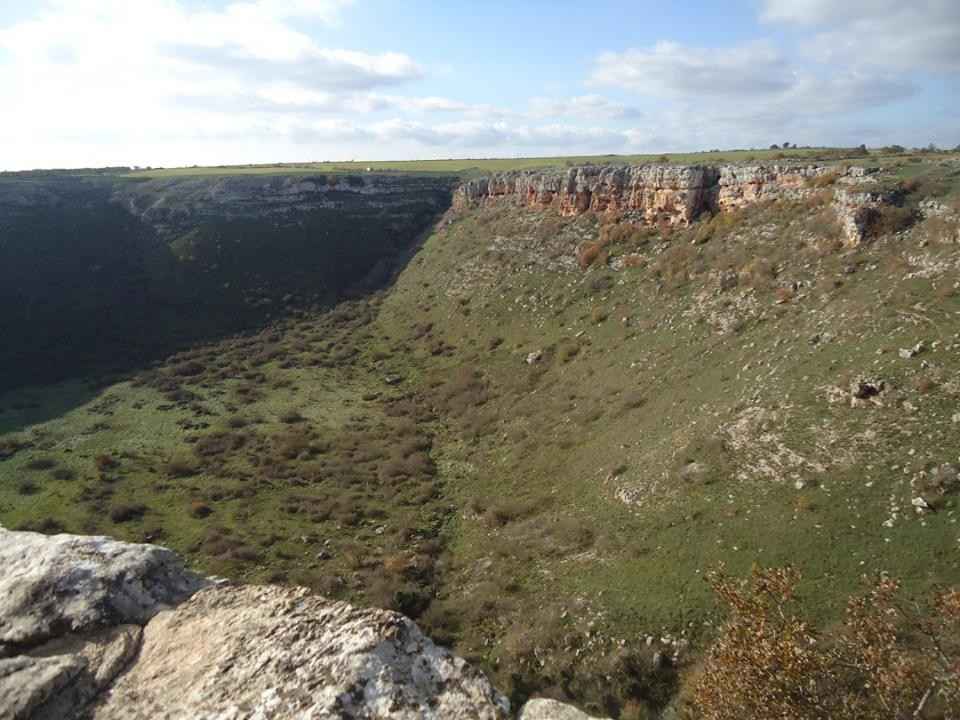
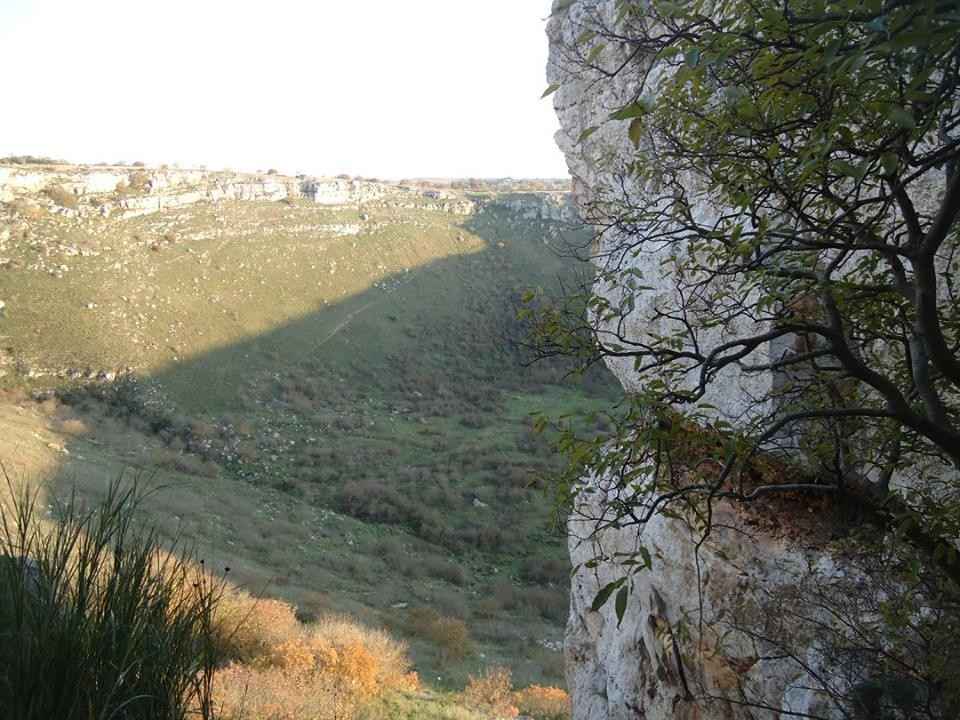
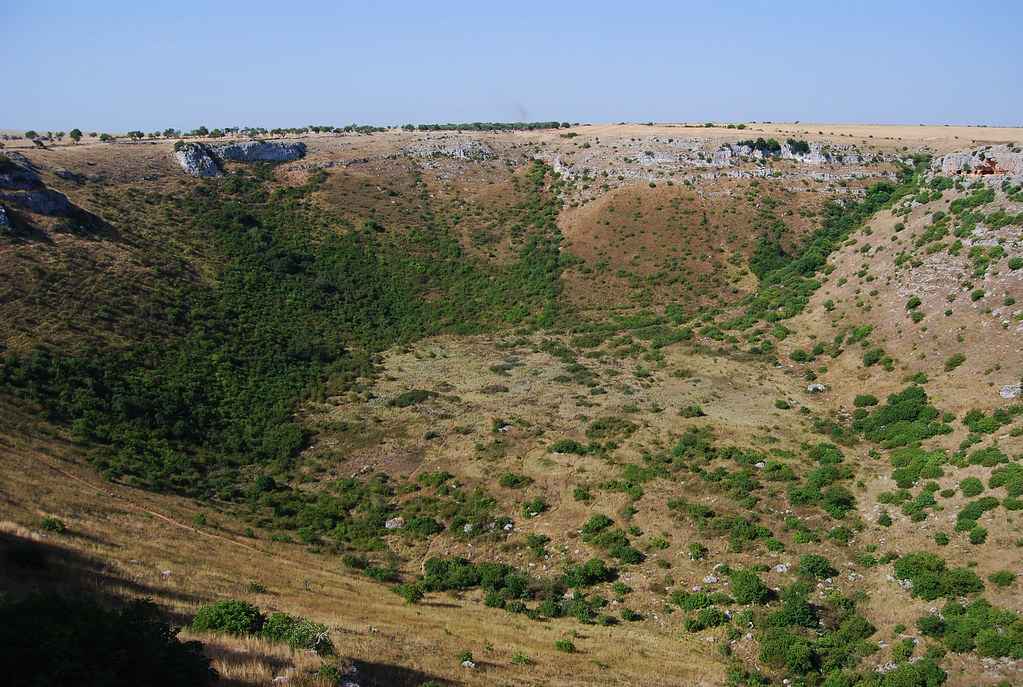 Also noteworthy is Carmelo Colamonico's observation that the sinkhole has widened (and continues to widen) in a northerly direction at the expense of the rock between the two lamas.
Also noteworthy is Carmelo Colamonico's observation that the sinkhole has widened (and continues to widen) in a northerly direction at the expense of the rock between the two lamas.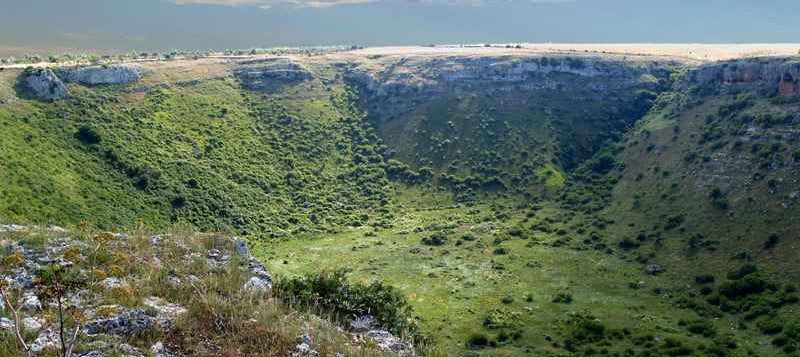
The observation of the fronts of the sinkhole is important. In many areas, the heads of the rocky layers protruding from the walls seem to converge to form a mild syncline, confirming the origin of the collapse of the dolina affirmed by Colamonico. It is very probable that the erosive furrow of NE, more than two million years ago, was underground and that at the Pulo it had its final delivery in a sinkhole which gradually widened to such an extent as to cancel the arch effect of the rocks above and collapse. The northern wall of the Pulo has several levels of caves and tunnels, which can be defined as interlayer cavities.
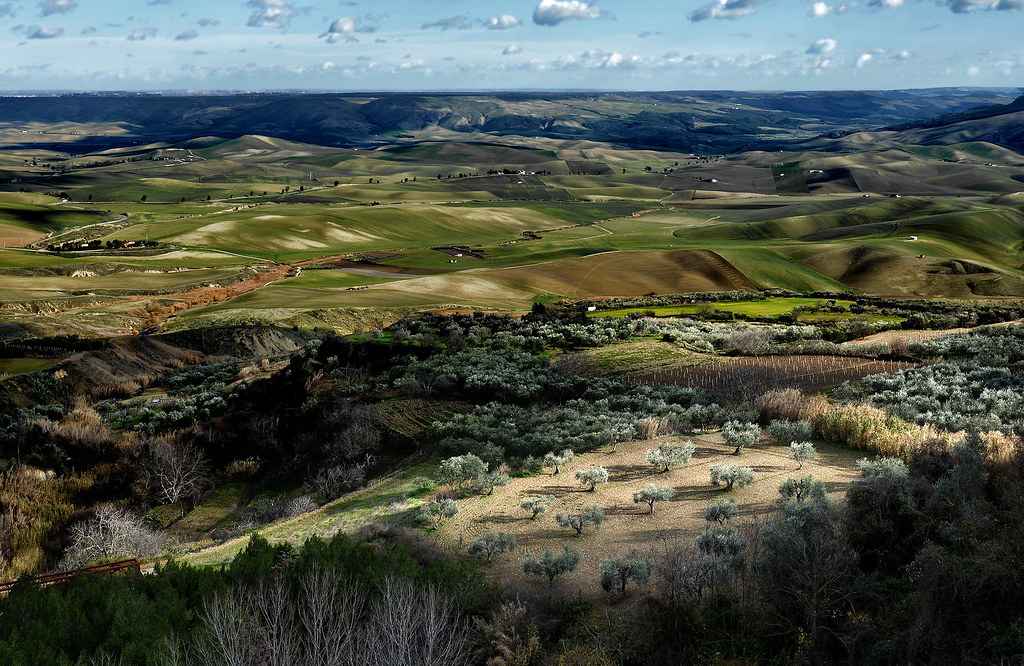
In light of new discoveries, the hypothesis that in different eras our planet has been reached by celestial bodies with a much higher frequency than previously asserted by the scientific world seems to conquer many followers. In fact if while the karst origin of the pulos could explain the genesis of the Pulo of Altamura but in the case of the Pulicchio of Gravina it leaves as much as perplexed.

Pulicchio of Gravina is a karst sinkhole located in the territory of Gravina in Puglia, about 10 km north of the town at 535 m asl, near the SP 238. It is one of the largest karst cavities in Puglia after the Pulo of Altamura and shares the term "pulo" with the Pulo of Altamura, the Pulo of Molfetta and the Pulicchio of Toritto. It differs from the latter by the slight steepness of the walls and the absence of caves. According to Michele Gortani's classification, it falls into the category of so-called "bowl sinkholes", since the profile follows a continuous curve and the difference in height is about 5 times smaller than the diameter.

It is very close to two other karst forms, namely Gurio Lamanna and the grave Tre Paduli.
The sinkhole has an ovoid shape, and is of regular shape and almost constant slope on all fronts (as can be seen from the contour lines of the map). The diameter is maximum at the NNW-SE direction and is 530 meters, while it is wider in the north part (400 meters) than in the south part (360 meters). It has a linear development of about 1600 meters and an extension of about 175000 square meters. It has a maximum height difference of 87 meters and the lower part has an altitude of 477.5 meters above sea level. Therefore, although a little smaller than the Pulo of Altamura, it turns out to be a little deeper than the latter
